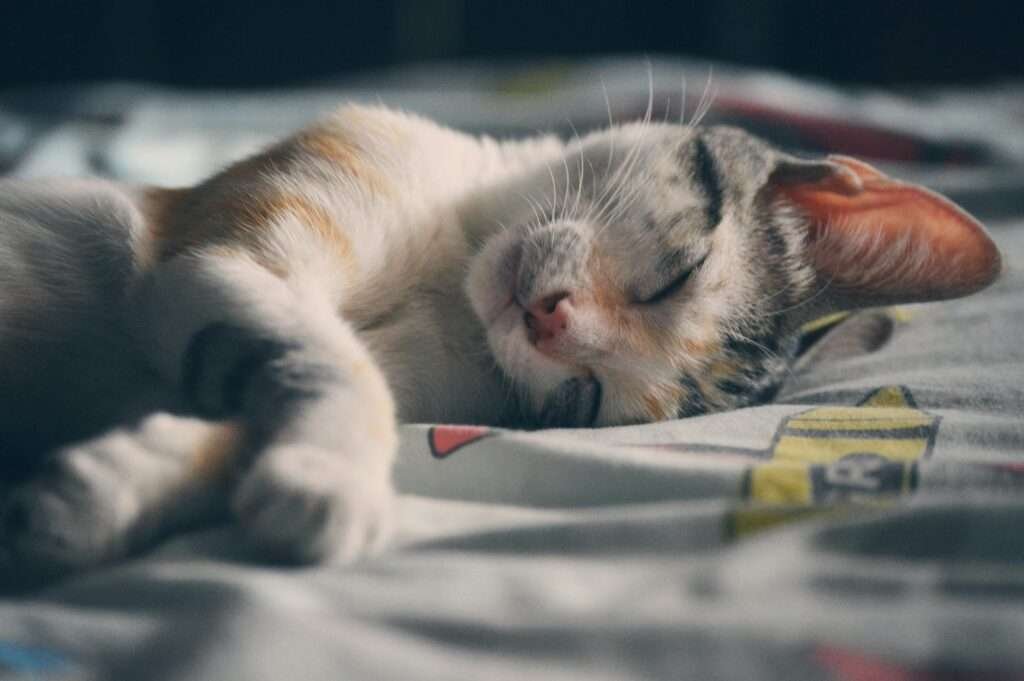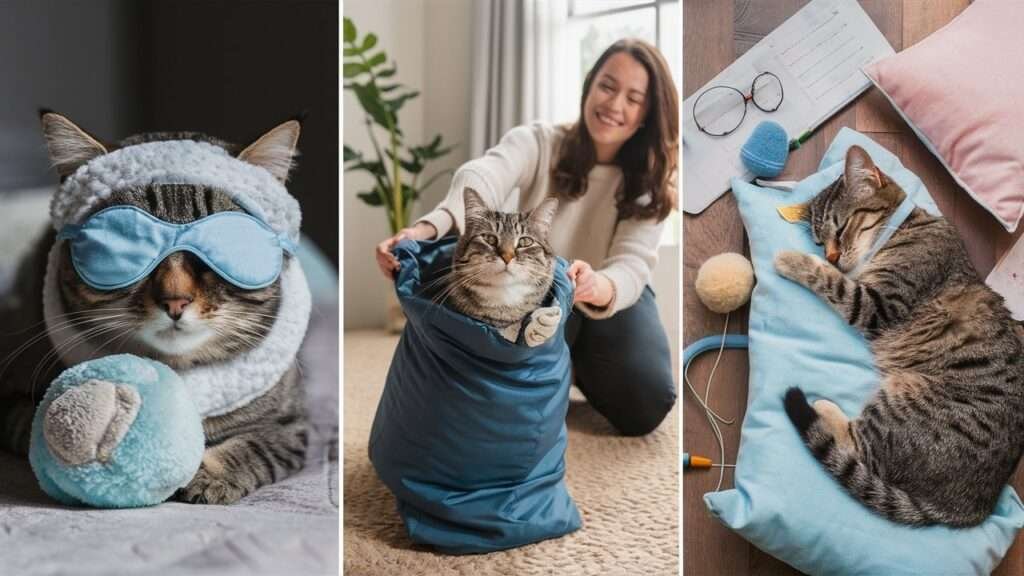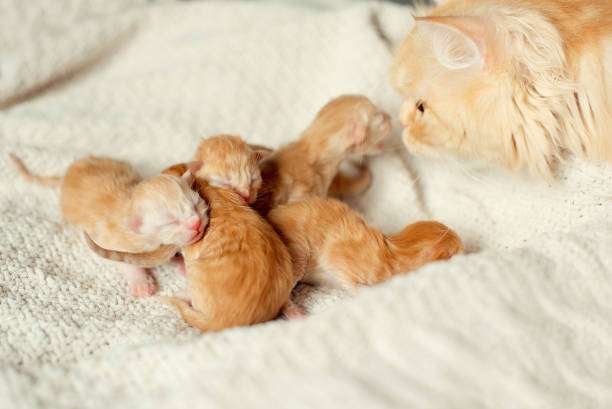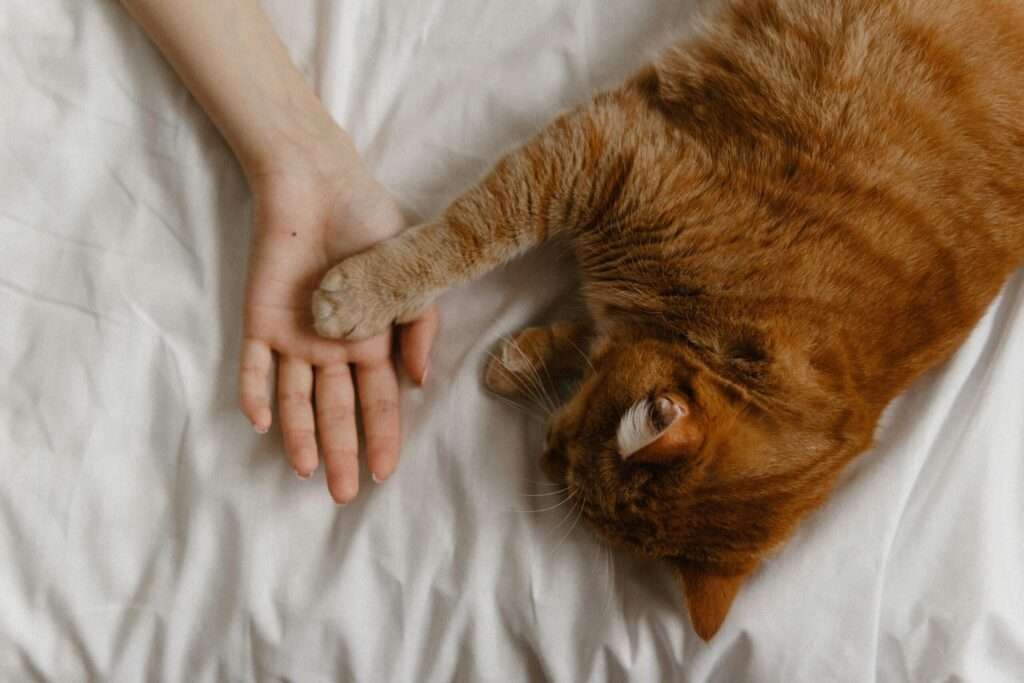Many cats exhibit a nocturnal streak, often with increased activity levels at night or early in the morning. This behavior stems from their natural tendency to search and be active during dusk and dawn, a phenomenon known as crepuscular behavior.
For owners who are away for work or school during the day, their cat may spend the day resting, especially if it is the only pet in the family. A cat’s day usually kicks into gear after the owner returns home, where they provide feeding, playtime and social interaction.
Nocturnal activity can be a challenge for some cat owners, which can manifest in a variety of ways such as poking at the owner’s ears or toes on the bed, walking past sleeping owners, vocalizing at night, or jumping across the furniture and engaging in energetic play sessions with them. Morning wee owners.
Table of Contents
ToggleUnderstanding the Causes:
- Natural Behavior: Cats are crepuscular animals, which means they are naturally most active during the twilight hours, specifically at dawn and dusk. This behavior is rooted in their evolutionary history as hunters, as these times provide optimal lighting conditions for hunting prey. Despite domestication, many cats still retain this innate behavior, which can lead to increased activity during the night, potentially disrupting their owners’ sleep patterns.
- Lack of Comfortable Sleeping Arrangements: Cats require a cozy and secure sleeping environment to feel comfortable enough to rest peacefully through the night. Observing your cat’s behavior and preferences can help you identify the type of bed or sleeping area they prefer. Cats often seek warmth and security, so beds with soft bedding material or enclosed spaces may be more appealing to them. Additionally, ensuring the bed is the right size for your cat is important, as overly large beds may not feel as snug and secure.
- Limited Access to High Places: Cats have a natural inclination to seek elevated spots for sleeping, as they offer a sense of safety and allow them to survey their surroundings. Restricting your cat’s access to high places at night may lead to restlessness, as they may feel more vulnerable sleeping in lower areas. Providing shelves or cat trees at suitable heights can offer alternative sleeping spots and help satisfy your cat’s natural instincts.
- Lack of Physical and Mental Stimulation: Cats require both physical and mental stimulation to prevent boredom and restlessness, which can manifest as nighttime activity. Without sufficient playtime and enrichment activities during the day, cats may seek out stimulation during the night, leading to disruptive behaviors such as meowing, pacing, or play aggression. Providing a variety of toys, scratching posts, and interactive play sessions throughout the day can help keep your cat mentally and physically engaged, reducing nighttime disturbances.
- Hunger and Attention-Seeking Behavior: Cats may meow or exhibit restless behavior at night to seek attention or food from their owners. Responding to these behaviors by providing food or attention can inadvertently reinforce them, as cats learn that meowing or being active at night results in a desired outcome. Establishing a consistent feeding schedule and engaging in play or cuddle sessions earlier in the evening can help satisfy your cat’s needs before bedtime, reducing the likelihood of nighttime disruptions.
- Reproductive Instincts: Unsterilized cats, particularly during their heat cycle, may exhibit increased vocalization and restlessness at night as they seek mates. This behavior can be distressing for both the cat and the owner, as it can lead to sleep disturbances and unwanted behaviors. Sterilization, recommended by veterinarians for the health and well-being of the cat, can help mitigate these reproductive-driven behaviors and promote better sleep habits for both the cat and its owner.
Tips for Sleep Training Your Cat:
Ensure Adequate Physical Activity
Engaging your cat in regular play sessions, especially in the afternoon and early evening, can help expend excess energy and promote relaxation before bedtime. Interactive toys, such as feather wands or laser pointers, can stimulate your cat’s natural hunting instincts and provide mental and physical exercise.
Provide a Comfortable Sleeping Environment
Investing in a comfortable and appropriately sized bed that meets your cat’s preferences for warmth and security can encourage restful sleep. Consider placing the bed in a quiet and secluded area of your home, away from sources of noise or disturbance, to create an ideal sleeping environment for your cat.
Offer Mental Stimulation
In addition to physical activity, providing a variety of toys and enrichment activities can help keep your cat mentally stimulated and prevent boredom. Puzzle feeders, interactive toys, and rotating playthings can keep your cat entertained during the day, reducing the likelihood of nighttime restlessness.
Feed Before Bedtime
Offering a small meal or snack before bedtime can help prevent hunger-induced disruptions during the night. Consider feeding your cat a portion of their daily food allowance in the evening to ensure they are satisfied and less likely to seek out food during the night.
Consider Adding a Feline Companion
If appropriate for your cat’s personality and temperament, introducing a new feline companion can provide social interaction and companionship, reducing loneliness and nighttime restlessness. However, it’s essential to carefully consider your cat’s individual preferences and needs before introducing a new pet into the household, and to provide proper introductions to ensure a harmonious relationship between the cats.
Sterilization
Sterilizing your cat, both males and females, can help reduce reproductive-driven behaviors, such as increased vocalization and restlessness during heat cycles. In addition to promoting better sleep habits, sterilization has numerous health benefits for cats, including reducing the risk of certain cancers and preventing unwanted litters. Consult with your veterinarian to discuss the best options for sterilizing your cat and to address any concerns or questions you may have.
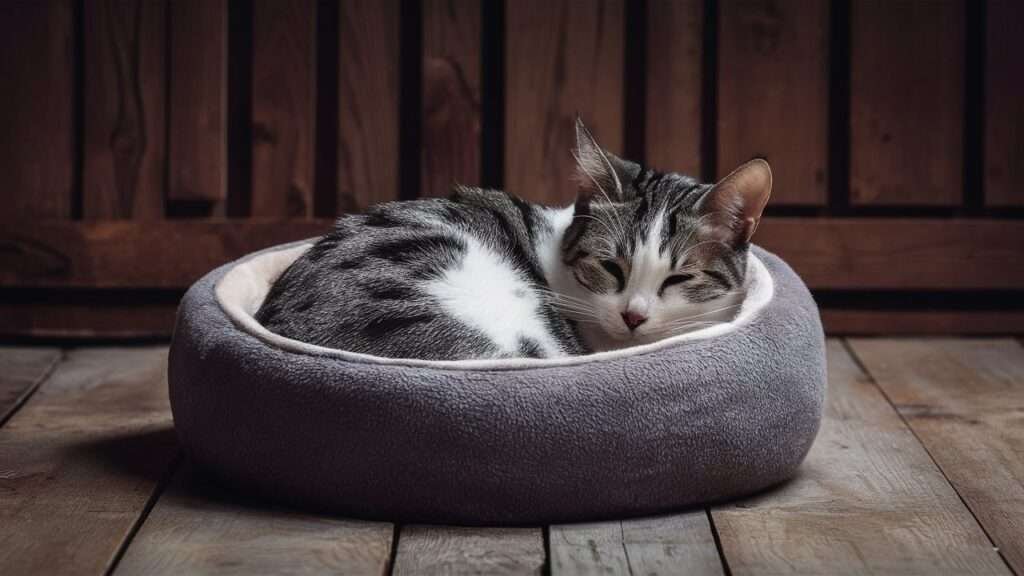
How to Make Your Cat Sleep in Their Own Bed
Cats, while beloved companions, may not always make the best bedfellows. However, respecting their comfort needs is crucial for fostering a harmonious relationship. Here’s how you can encourage your cat to sleep in their own bed:
1. Choose the Perfect Bed: Selecting the right bed is essential for your cat’s comfort. Consider the size, ensuring it’s spacious enough for them to turn around and stretch out comfortably, but not too large that it feels overwhelming. Opt for beds made from easy-to-wash materials, such as those with removable covers, to maintain cleanliness and hygiene. Beds with sufficient cushioning, such as high-density foam padding, provide added comfort. Cave or Igloo beds offer a cozy retreat for cats seeking privacy.
2. Discover the Best Sleeping Spot: Observing your cat’s behavior can help identify their preferred sleeping spots. Place their bed in a warm, sunlit area of your home, away from drafts or cold temperatures. Ensure it’s near a suitable heat source during winter months. Once you’ve identified a suitable location, try to maintain consistency to avoid disrupting your cat’s adaptation period.
3. Create a Conducive Environment: If you’re trying to discourage your cat from sleeping in certain areas, provide alternative resting spots. Set up a second resting area, preferably elevated, using stable shelves or wall-mounted beds. Introduce a cushion or second bed to make the space inviting and secure for your cat.
4. Use Positive Reinforcement: Encourage your cat to use their bed by offering treats, toys, or even a familiar blanket from your bed. Use words of encouragement, petting, and play to reward them when they use their bed voluntarily. For newly adopted cats, reward them with treats during the initial days of using their bed. Gradually decrease treat rewards as they become accustomed to the bed, but continue to offer positive reinforcement to reinforce the behavior.
5. Avoid Punishment: Never punish or scold your cat for sleeping in undesired areas. Punishment can cause stress and insecurity, leading to further behavioral issues. Instead, use firm redirection techniques, followed by positive reinforcement to encourage desired behavior. Building trust and a positive relationship with your cat is essential for effective training.
6. Keep Them Well-Stimulated: Ensure your cat’s environment is enriched with toys, scratching posts, and interactive play opportunities. Engage in regular play sessions to expend their energy and prevent boredom. A well-stimulated cat is more likely to sleep soundly in their own bed.
Why Your Cat Always Sleeps on Top of You?
Cats, despite having their own comfy cat pads, often insist on using their owners as pillows. Here are some reasons behind this behavior:
Seeking Security
One of the primary reasons your cat may choose to sleep on top of you is to seek security. In the wild, sleeping increases a cat’s vulnerability to predators. By curling up on top of a trusted human, cats feel safer and more protected, enhancing their ability to sleep peacefully. Your warmth and comforting presence provide reassurance to your cat, allowing them to relax and rest without fear.
Affection and Bonding
Cats are social creatures that form strong bonds with their owners. If you spend a significant amount of time away from home during the day, your cat may miss your affection and attention. Sleeping on top of you allows them to feel close to you and strengthens the bond between you two. Your cat may seek out your company whenever you’re around, using sleep time as an opportunity to be close to you and enjoy your presence.
Preference for Your Scent and Body Heat
Your cat’s choice to sleep on your head or body may also be influenced by your scent and body heat. Cats have a keen sense of smell and are territorial animals. Your scent provides them with a sense of familiarity and comfort, making them feel secure enough to snuggle up close to you. Additionally, your body emits warmth, especially around your head, making it an attractive and cozy spot for your cat to curl up and sleep.

